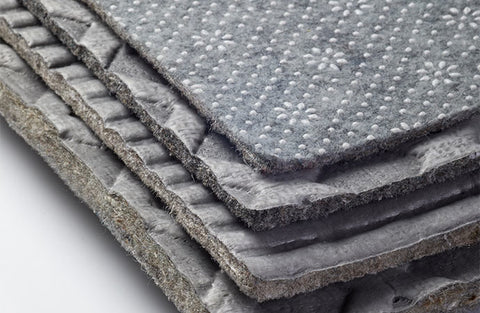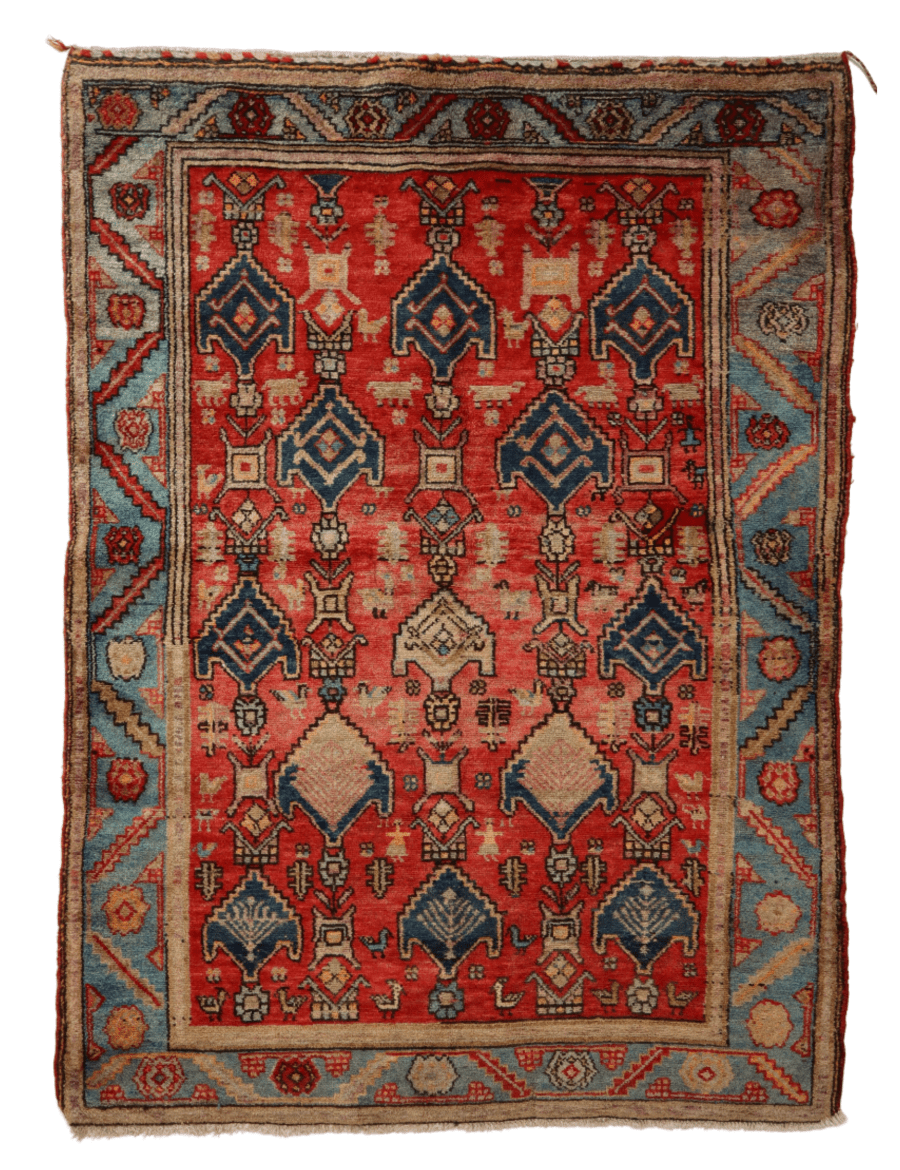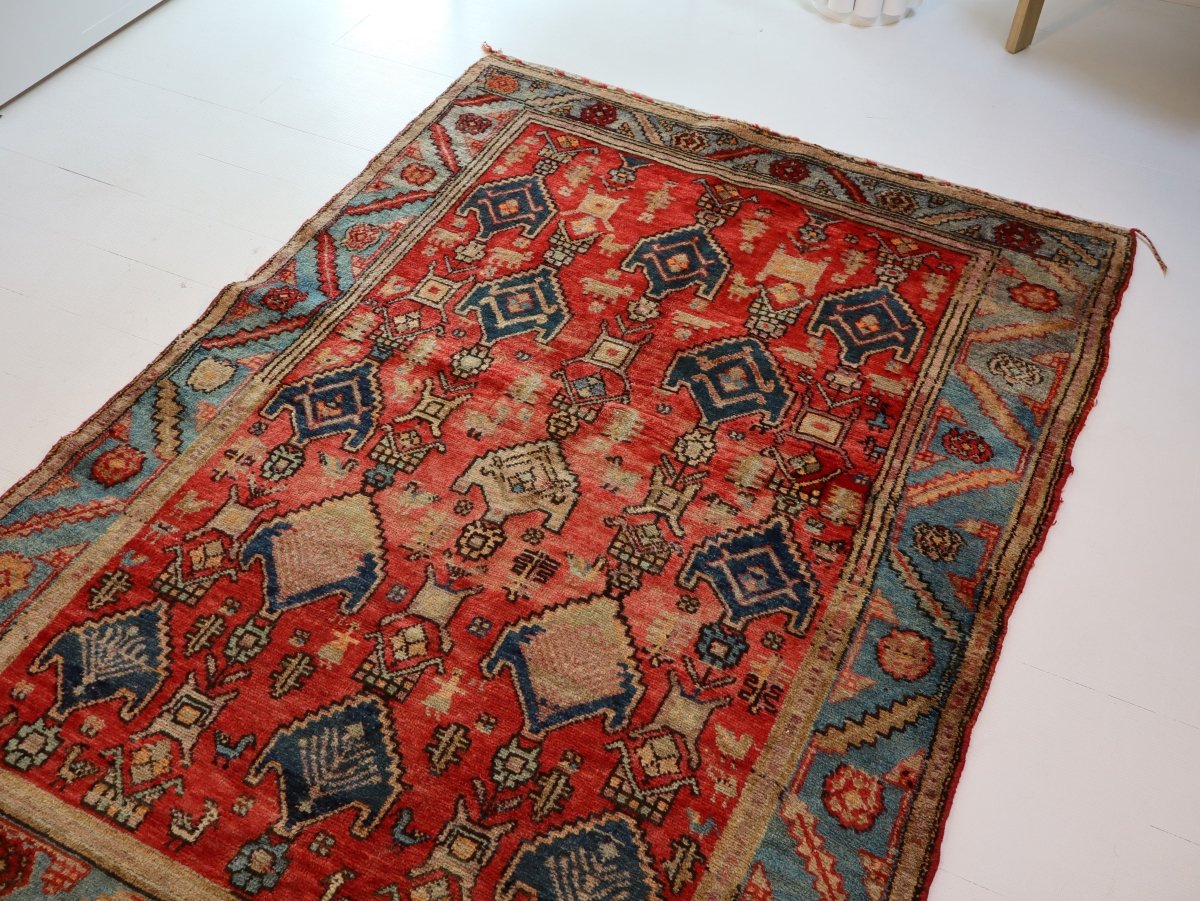A rug pad is a thin layer of material that goes under your rug and provides a range of benefits, such as protection, comfort, safety, and noise reduction. It can also extend the life of your rug and your floor by preventing wear and tear, scratches, and dents.
Rugs are an essential part of home décor, and they add warmth and comfort to any room. But did you know that the right rug pad can not only extend the life of your rug but also protect your floors and enhance the comfort of your home? To ensure your rugs last for years to come, you need to use the right pad underneath.
There are different kinds of rug pads made of various materials, each with its own features and advantages. Choosing the right type for your home can be a daunting task, especially if you don't know what to look for.
That's why we've created this ultimate guide to help you discover everything you need to know about rug pads and make an informed choice for a comfortable, safe, and beautiful living space.
Factors to Consider While Selecting an Area Rug Pad
Before you buy a pad, there are some factors you need to consider, such as:
Cushioning
The level of cushioning is a significant factor to consider when choosing a rug pad. Thickness varies from 1/16 inch to 1/2 inch, and the thicker the pad, the more cushioning it provides. However, keep in mind how high the pad will raise the rug, particularly if it's a smaller area or needs door clearance.
Non-Slip
A non-slip pad is a great solution for small and lightweight rugs that tend to shift or bunch up. Natural rubber pads are ideal for their non-slip features, but a hybrid of rubber and felt provides added comfort.
Eco-Friendly
If you're concerned about the environment or harmful pads emitting volatile organic chemicals (VOCs) that lower indoor air quality, an eco-friendly type is an excellent option. Opt for a pad made of natural rubber, recycled heat-pressed felt, or organic jute fibers.
Price
Rug pads are an investment that will pay off in the long run. The cost may vary based on size, cushion, and material, but keep in mind that a high-quality one can prevent more costly charges, such as floor damage or rug replacement.
Size
The best underlay will depend on your rug size. Smaller rugs and runners require more grip, but larger rugs do not require as much grip and are frequently used in spaces where you want more softness underfoot, such as living rooms and bedrooms.
Material
Rug underlays are made of various materials, including memory foam, rubber, felt, and latex. The ideal option for you will be determined by the kind of rug and the function of the rug pad. For example, memory foam provides the most cushioning, while natural rubber has the best non-slip features.
Floor type
Consider the type of flooring you have when selecting a rug pad. Hardwood, tile, and other hard surfaces require a non-slip pad to prevent scratching and slipping, while carpeted surfaces require a thinner pad for cushioning.
Rug type
The type of rug you have will also impact the type of underpad you need. For example, if you have a thin, flatweave rug, you may not need as much cushioning as you would with a thicker, plush rug. Additionally, some rug materials, such as jute or sisal, require a specific type of pad to prevent slipping and protect the fibers.
Traffic
Consider the amount of foot traffic the area rug will receive. High-traffic areas, such as hallways or entryways, will require a durable pad that can withstand frequent use and maintain its shape.
Allergies
If you or anyone in your household has allergies, consider selecting a rug underlay that is hypoallergenic and free of synthetic materials, which can release harmful chemicals into the air.
Maintenance
Consider the maintenance requirements of the rug pad. Some pads require frequent vacuuming to prevent dirt and debris buildup, while others can be wiped clean with a damp cloth. Choose a pad that fits your cleaning routine and lifestyle.

Types of Rug Pads
pads are available in a variety of materials, each with its own unique features and benefits. The ideal rug or carpet pad for you will depend on the type of rug you have and its intended use. Here are some of the most common kinds of rug underlays:

Felt Rug Pads
Felt pads are a popular choice for their cushioning and sound-dampening properties. Made from compressed fibers, felt rug pads provide excellent support for area rugs and help to protect your floors from scratches and dents. They are ideal for use with all types of rugs and can be trimmed to fit any size or shape.

Rubber Rug Pads
Rubber pads are a great option for preventing slipping and sliding. Made from natural or synthetic rubber, these pads offer excellent grip and are perfect for high-traffic areas like entryways and hallways. Rubber rug pads also provide some cushioning, making them a good choice for thinner or lighter weight rugs.

Memory Foam Rug Pads
Memory foam pads offer the ultimate in cushioning and comfort. Made from a high-density foam material, these pads conform to the shape of your rug, providing excellent support and reducing pressure points. They are especially ideal for use with thicker or heavier rugs.

Felt pad with latex backing
Latex Rug Pads
Latex pads are another popular option for preventing slipping and protecting your floors. Made from a natural or synthetic latex material, these pads offer good grip and are suitable for use with all types of rugs. They also provide some cushioning and help to extend the life of your rug by reducing wear and tear.

PVC Rug Pads
PVC pads are made from a type of plastic that is known for its durability and moisture resistance. These pads offer excellent grip and are ideal for use in humid or damp environments. However, they may not be the best choice for use on hardwood floors, as they can leave behind residue or discoloration over time.

Jute and rubber pad
Natural Fiber Rug Pads
Natural fiber pads, such as those made from jute, wool, or cotton, are an eco-friendly option that provide good grip and cushioning. These pads are also hypoallergenic and free from harmful chemicals, making them a good choice for people with allergies or sensitivities. However, they may not be as durable as other kinds of rug underlayings and may need to be replaced more frequently.

Polyester Rug Pads
Polyester pads are a budget-friendly option that offer good grip and cushioning. These pads are also lightweight and easy to trim to fit any size or shape of rug. However, they may not be as durable as other kinds and may compress over time, leading to reduced support and protection.
By considering the pros and cons of each kind of rug pad, you can choose the one that best meets your needs in terms of performance, durability, and budget.

Benefits of Rug Pads
They offer several benefits, including:
Protection
A rug pad provides a protective layer between your rug and the floor, preventing scratches, dents, and other damages caused by heavy foot traffic or furniture. This protection can help extend the lifespan of both your rug and your floor.
Comfort:
A rug pad adds an extra layer of cushioning under your rug, making it more comfortable to walk on. This additional cushioning can reduce foot fatigue and make your rug feel softer and more luxurious.
Safety:
A rug pad prevents your rug from slipping and sliding, reducing the risk of accidents. This is especially important for high-traffic areas or homes with children or elderly individuals.
Noise Reduction:
A rug pad absorbs sound, making your home quieter. This can be particularly useful in apartments or homes with hardwood or tile floors, where noise can easily travel and disrupt your daily activities.
Overall, using a rug pad can enhance the comfort, safety, and longevity of both your rug and your flooring.

Rug pad caused damage to hardwood floor
The Risks of Using Low-Quality Rug Pads
Using a low-quality pad can be detrimental to both your floors and your health. These pads are often made with toxic chemicals and adhesives that can cause damage and discoloration to your flooring, as well as pose health risks to you and your family.
Chemicals and Toxins:
One of the biggest issues with low-quality plastic rug pads is that they are often coated with adhesives to improve their grip. Unfortunately, these adhesives can stick to your flooring and cause damage. Additionally, many of these pads contain a dangerous mixture of chemicals that can "off-gas" and contaminate your home with toxins.
Damage to Flooring:
The adhesive coating on low-quality rug pads can stick to your flooring and cause damage. In fact, a large percentage of the rug pads on the market today include chemicals, oils, or adhesives that may react negatively with the chemicals in your floor finishes. This can result in discoloration, damage, and even voided warranties on your flooring.
Health Risks:
The toxic chemicals in low-quality rug pads can pose health risks to you and your family. These chemicals can "off-gas" and contaminate the air in your home, leading to respiratory problems, headaches, and other health issues.
To protect your floors and your health, it's important to choose a high-quality rug pad made with safe materials like natural rubber or felt. These materials provide excellent grip and cushioning without the risk of damage or toxicity.

FAQ
Here are some frequently asked questions and answers about rug pads:
What rug pad size is good for a 8x10 rug?
The good size for an 8x10 rug depends on the type and thickness of the pad and the rug. In general, the pad should be about 1 or 2 inches smaller than the rug on all four sides. This will prevent the pad from showing or curling under the rug and will provide enough grip and cushion. For example, if you have an 8x10 rug, you will need a 7'10" x 9'10" pad.
How often should I replace my rug pad?
Should pad be the same size as rug?
No, a pad should not be the same size as the rug. A pad should be slightly smaller than the rug, usually by 1 to 2 inches on each side. This will ensure that the rug covers the pad completely and that the edges of the rug lay flat on the floor. A pad that is the same size as the rug or larger than it can cause problems, such as showing, curling, folding, or interfering with the rug's backing or binding.
How to clean a rug pad?
The best way to clean it depends on the type and material of it and the type and extent of the dirt or stain. Some general tips to follow are:
- Vacuum or sweep it regularly to remove dust, dirt, and debris.
- Spot clean any spills or stains on the pad as soon as possible with a mild detergent and water. Use a cloth or a sponge to blot the affected area and rinse with clean water. Avoid rubbing or scrubbing, as this can damage the fibers or the rubber. Do not use bleach, ammonia, or harsh chemicals on the pad, as they can discolor or deteriorate it.
- Air dry it completely after cleaning or washing. Do not use a dryer, a heater, or direct sunlight to dry them, as they can shrink or melt. Lay the pad flat on a clean surface or hang it over a railing or a clothesline to dry.
- Wash it occasionally in a large tub or a bathtub with mild soap and water. Do not use a washing machine, as it can damage the it. Submerge the pad in the water and gently agitate it with your hands. Rinse it thoroughly with clean water and squeeze out the excess water. Do not wring or twist the pad, as this can deform or tear it.
Final Words:
Rug pads are necessary investments to protect your floors, add comfort, and prevent slips and falls. With the right type you can extend the life of your rug and enjoy its benefits for years to come. Use this guide to choose the right rug one for your home and enjoy a comfortable, safe, and beautiful living space.
At Rug the Rock Oakville, we proudly offer eco-friendly felt and natural rubber rug pads. Unlike ordinary rug pads that are just a layer of felt, ours feature a durable rubber backing paired with a condensed needle-punch felt. This combination ensures longevity and keeps your rug securely in place without deteriorating over time.
The rubber backing is exceptionally effective at preventing your rug from sliding, even in high-traffic areas. It's ideal for homes with kids or pets, and it makes vacuuming easier by keeping your rug firmly in place. Our rug pads are also safe for most hard floors, including hardwood, tile, and cement, protecting against scratches, scuffs, and general wear and tear.
As well as the availability of popular sizes, our rug pads can be easily trimmed to fit any unique size or shape. They are compatible with a wide range of rug types, from tufted, wool, shag, and jute to kilims and low to high-pile rugs. Enhance your rug's durability and stability with our eco-friendly felt and natural rubber rug pads.












































Leave a comment